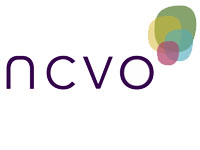Posted on July 27th, 2011 by Pathways through Participation in Archived related news
Tagged as: active citizenship, drivers, measurement, participation, RSA
Post a comment
The RSA has recently published - ‘The Civic Pulse’ - a report that takes the first steps towards developing a new model for measuring active citizenship, or more specifically ‘the presence or absence of key mechanisms and social assets driving participation’. With our focus on exploring ‘what creates and sustains active citizenship’, I am very interested in the development of this model.
The authors of the report identify that in the current policy, social and economic contexts, and with the loss of the Citizenship and Place Surveys, ‘…local policymakers need a new way of measuring active citizenship which can identify both “civic assets” as well as areas of “civic need” within communities, and which can be used to fashion appropriate interventions to stimulate levels of participation.’
The Civic Pulse model is based on a meta-theory of Republican Liberalism which ‘considers active citizenship to be a social right and civic obligation’ placing ‘particular emphasis on developing the ability of people to shape their own lives and the life of their communities and public institutions.’
The authors draw upon previous measurement models (including WARM, The Vitality Index, CLEAR and The Citizen Audit) to establish four principles for the Civic Pulse model; it must:
- ‘Get beyond satisfaction and opinions’;
- ‘Measure subjective drivers of active citizenship behaviour’;
- ‘Measure more nuanced drivers of active citizenship’; and
- ‘Look at social assets, not just deficits’.
And they identify three groups of models of participation from which they establish key drivers of active citizenship:
- Structural models, which emphasise the ‘social norms and resources people have’;
- Choice models, which consider the ‘informed choices people make’; and
- Capacity models, which highlight people’s personal skills, knowledge and attitudes.
Based on these principles, models and drivers they establish a framework with five dimensions:
- ‘Know-how’, including skills and knowledge;
- ‘Attitudes’, including other-regarding and resilience and wellbeing;
- ‘Relations’, including horizontal and vertical;
- ‘Institutions’, including local groups, local services, and the local authority; and
- ‘Resources’, including income, wealth and education.
Our findings from Pathways through Participation (which will be published in September) support the importance of all of these dimensions to if and how people participate, from intrinsic motivations (including altruism, self-interest and reciprocity) and resources (including skills, knowledge and confidence) to extrinsic resources (including relationships and social networks) and opportunities (including groups and organisations, and local environment and place). The Civic Pulse looks to be a good step towards measuring active citizenship.


 ShareThis
ShareThis Subscribe to our project updates
Subscribe to our project updates

